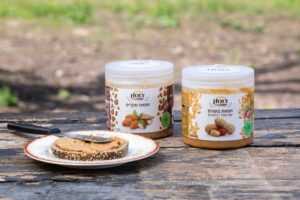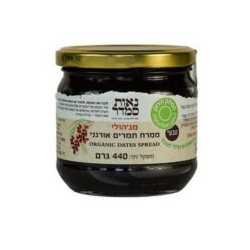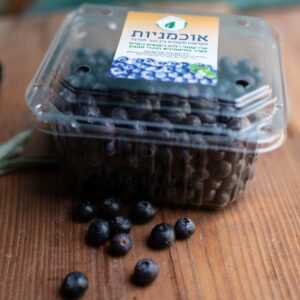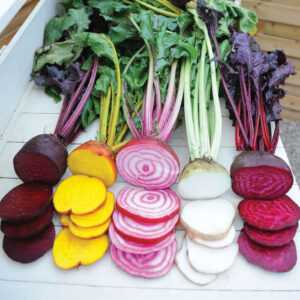DON’T MISS GREAT SPREADS AT GREAT PRICES!
There’s a great sale on Holy Butter’s delicious Almond Butter and Peanut butter!

Jason of Holy Butter roasts and grinds homegrown (real Israeli) almonds and peanuts to produce splendid-quality Peanut and Almond Butter.
2 Containers of Peanut Butter: 48 NIS
2 Containers of Almond Butter: 72 NIS
Supply limited! Hurry and add these delicacies for delivery in your boxes!
________________________________
AND….A WONDERFUL NEW DATE SPREAD, TOO!
Kibbutz Neot Smadar’s beautiful date plantation is proud to present a new product:
Joining its delectable Majhol dates and Silan (date honey) is DATE SPREAD, made from 100% organic Majhol dates.

This very special product exclusively contains dates, with no added water, sugar, stabilizers or various flavoring acids. Ideal for spreads, baking and cooking.
ORDER THIS AMAZING DATE SPREAD TODAY, VIA OUR ORDER SYSTEM.
______________________________
GOOD BLUEBERRY NEWS:
Starting this week, you can add a large-size package of blueberries at a specially-reduced price!

18 NIS per 125-gram package
60 NIS per per 500-gram package
Blueberry season is short! (Only two months, and then followed by the raspberry season, inshallah). So, hurry and add blueberries to your boxes now via our order system.
__________________________________
BEETS US!
To our very pleasant surprise, we’re enjoying a nice mild spring! Despite occasional bursts of heatwaves and haze, the temperatures overall have not yet shot up. We’re thoroughly enjoying cool mornings and cool afternoons, with nice sunshine in-between. One of the biggest winners of this spring (besides us…) is the red beet. It’s been with us since fall, as one of the first vegetables to announce that the Chubeza Box cast of vegetable characters has changed from a summer to winter ensemble. Beets are also one of the winter vegetables that will leave the box shortly at spring’s end. In recent years, when spring swiftly turned into scorching summer, the last beets were already quite pathetic. But this year, they are basking in glory – big, sweet, and juicy! So, in honor of this wonderful vegetable – this week’s Newsletter is a tribute to The Beetroot.
The first half of the annals of Beet History is actually the history of Swiss chard, its immediate relative and possibly even its older brother. Their common ancestor is probably the wild beet which grows along the Mediterranean area, whose leaves and stems were gathered as an early source of food. Naturally, the first farmers to deal with the beet attempted to cultivate a plant that yields large leaves and wide chubby stems, i.e., the Swiss chard. These farmers were probably Greeks and Romans living along the Mediterranean shore, and one hypothesis holds that the family received its name “beta” because its seed pod resembles the Greek letter Beta. The Hebrew word for beet, Selek, derives from the Arabic Salak.

The beet root became edible around the second or third century. The first beetroot recipes for the Roman kitchen appeared around that time, some touting such praise as “better than cabbage!” In the beginning, only young wild beet roots were gathered and cooked, and only in the 16th century do documents appear attesting to the existence of a genetic mutation in the seeds that arrived from Italy to Germany and created: the beetroot. To this day, one of the beet’s nicknames is “Roman beet.” Still, even during this time, it was a scarce vegetable in Europe. At the start, it was only used medically. The red beet was known to be beneficial in treating amoebic or bacterial dysentery, internal wounds, nasal congestion and hepatitis. Only in the 19th century did its culinary virtues gain recognition.
The Chenopodiaceae family seeds deserve a few words as well: the beet or Swiss chard seed is in reality a collection of seeds tucked close to one another inside the dry fruit. Thus when seeded, it will grow a number of sprouts at once, meaning they must be thinned upon sprouting (some seed companies separate the collection of seeds and offer single seeds in order to allow accurate seeding and reduce the need to thin. But we go with nature…). Where there is no opportunity to thin the sprouts, the immediate results will be 10 cm-high plants whose leaves are ready to be cooked or placed in a salad. Usually the seeds sprout slowly, each at its own rhythm, over a long period of time, creating beets of various ages and sizes. Thus, when we harvest them, we basically scan the entire bed and pull out the biggest roots, allowing more space for the remainder of the crop to grow.

In popular medicine called “like cures like” (similia similibus curentur), the belief is that plants represent their medicinal use by their shape, color or resemblance to body parts. The red beet is considered a remedy for treating blood circulation. Contrary to the purple color of other vegetables (cabbage, onion, eggplant, lettuce, pepper, basil, etc.), the purple in the beet is quite unique. Its origin is in the purple pigment category “betalain,” which contains strong antioxidant qualities and excellent capacities to battle cancer and heart disease. The beet also contains salicylic acid, an aspirin–like compound which is anti-inflammatory and contributes to the vitality of blood vessels and the heart. The beet is considered one of the “cleansing” vegetables which is highly beneficial for the liver, kidneys, and even swollen legs and constipation.
Unlike the internal cleansing qualities of the beet, the external experience is quite the contrary. The beet cells are unstable and they “leak” when you slice or peel the root. Cooking stabilizes the cells, which is why cooking the beet within its peel will reduce the staining. These pigments stabilize under acidic conditions, thus making pickling your beets a good (mess-preventing) idea. But beets color things other than your hands. We all know the red beet-dyed horseradish. Natural coloring extracted from beets is used as a popular food dye for pizza “tomato” sauce, pink lemonade or edible ink (the kind you might use to print on slices of meat).
Beets are usually round and red, but not exclusively. They come in many colors and shapes, ranging from striped to yellow, white, and purple. And you’re already acquainted with the elongated Chubeza beet alongside its roly-poly brother.
Despite the fact that it is a vegetable with high sugar value, and perhaps because of that fact (even higher than carrots and sweet corn), the beet is a good friend of weight watchers, containing only 30-40 calories. In addition, it is rich in folic acid, vitamin C and potassium.
Another relative is a white-root beet – the sugar beet. From the time that the Crusaders returned from their journeys, they craved the sweet flavor of the sugar they knew and loved. But sugar was an expensive commodity, imported to Europe via sea dwellers or roaming merchants. In 1747, German chemist Andreas Sigismund Marggraf succeeded in extracting a small quantity of sugar from a beetroot, then used as animal fodder. However, the process was highly labor-intensive, and the sugar content in beets was low. One of his students, Franz Achard, was more practical. He realized that if you want to extract more sugar from your beet, you just have to create sweeter beets. He then crossbred white beets and created the father of the modern sugar beet:
Tips:
- To store beets: trim any greens (the greens pump the root dry of its liquids, like the carrot or radish), allow three centimeters of the stem, and do not cut the root. Store the beet in the vegetable drawer of a sealed container and wrap the greens in a towel and plastic.
- In order to prevent “bleeding,” don’t cut or peel the beet prior to preparation. After cooking, steaming or baking, it will peel very easily.
- Adding some vinegar to the cooking water reduces the smell of cooking beets and allows them to keep their color. The cooking creates a clear beet stock which can be used for food coloring (like for rice, p’titim or couscous). Beets are naturally high in sodium, thus no salt need be added when cooking.
- When baking beets: to prevent staining, wrap in aluminum foil. It is best to add some kind of preferred seasoning, i.e., garlic, lemon slices, cumin or coriander seeds. The flavor penetrates and enriches the beet as it bakes.
- Beets can also be microwaved: pierce an unpeeled beet with a fork (to allow the steam to escape), place in a microwavable bowl, add a bit of water and heat uncovered for 4 minutes per beet, till soft.
- After the beets are prepared: to clean your hands of beet stains, rub with wet salt and lemon juice, then wash with soap and water.
- When our beets come with greens, don’t trash them! Use the greens like spinach or Swiss chard for a great semi-sweet flavor.
Wishing you all a week bursting with color, flavor and good health!
Alon, Bat Ami, Dror, Einat, Orin and the entire Chubeza team
____________________________________________________
WHAT’S IN THIS WEEK’S BOXES?
Monday: Lettuce, celery/parsley root, zucchini, beets/sweet potatoes/slice of pumpkin, carrots, potatoes, parsley/coriander, New Zealand spinach/kale, tomatoes, cucumbers, Swiss chard.
Large box, in addition: Cabbage/acorn squash/fennel/kohlrabi, garlic/snow peas, onions/eggplant.
FRUIT BOXES: Oranges/clementinas/pomelit, red apples/nectarines/ shesek, avocados, bananas.
Wednesday: Lettuce, zucchini, beets/sweet potatoes, carrots, potatoes, parsley/coriander, New Zealand spinach/kale, tomatoes, cucumbers, Swiss chard, onions/garlic.
Large box, in addition: Cabbage/fennel/kohlrabi, acorn squash/slice of pumpkin/eggplant/fakus, celery.
FRUIT BOXES: Oranges/clementinas/pomelit, red apples/nectarines/pear, avocados, bananas.



